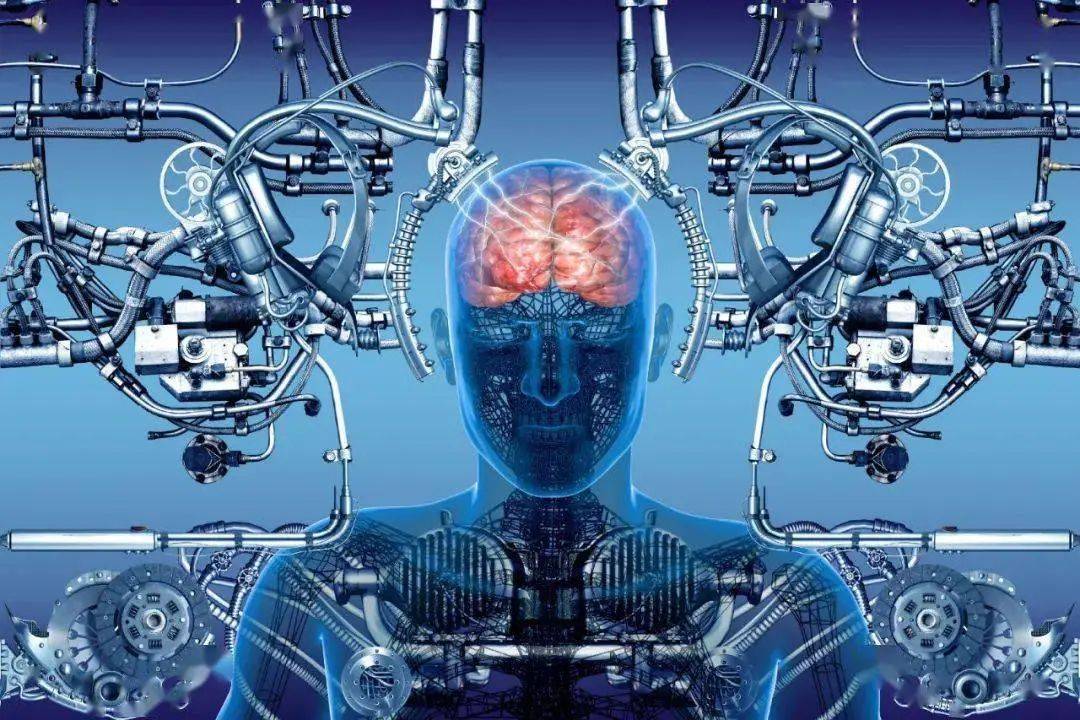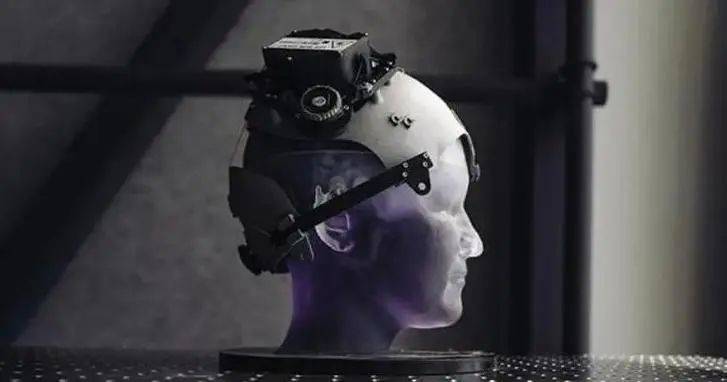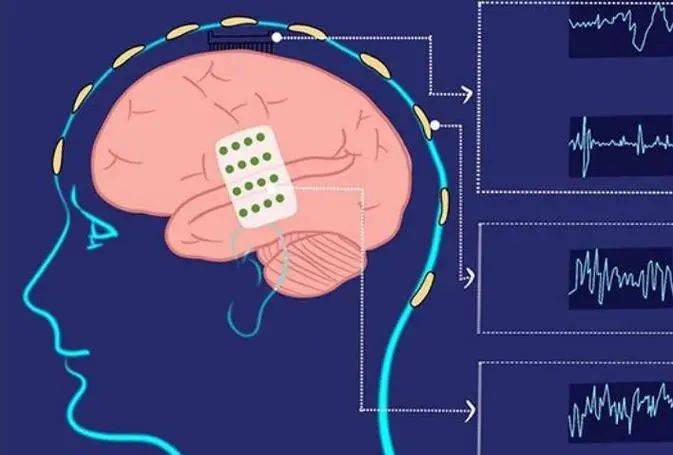

Brain-computer interface is to establish a direct connection path between the human brain and external devices, allowing the brain to "dialogue" with the machine.
In science fiction movies, there are often scenes like this - disabled people can use robotic arms to play and sing freely, aphasic people can "speak" again, deaf people can hear sounds again, and human beings rely on "ideas" to command huge Mechanical... In fact, these magical scenes are not just science fiction imagination. In reality, the constantly developing "brain-computer interface technology" is going to make these become reality in the future.
Brain-computer interface is a cutting-edge emerging technology that deeply integrates life sciences and information technology, and is an important direction for cultivating future industrial development. At the 2023 Zhongguancun Forum-Brain-Computer Interface Innovation and Development Forum held recently, experts pointed out thatwith the joint efforts of the industry, my country has formed a full industry chain of brain-computer interface covering the basic layer, technology layer and application layer. And its application in medical, education, industry, entertainment and other fields will show strong innovation driving force and huge development potential.
What is brain-computer interface technology? What are the inherent advantages and problems that need to be solved for its development in my country? What are the prospects for industrial development? Today, please follow "China Science and Technology Information" to talk about these topics.Brain-computer interface technology originates from human beings’ desire to expand brain intelligence
Recently, Elon Musk announced that his brain-computer interface company Neuralink has received approval from the U.S. Food and Drug Administration and will launch the first human clinical trial. This is considered by the industry to be an important milestone in the commercialization of brain-computer interfaces. At the same time, domestic practice is also at the forefront. In May, the world's first non-human primate interventional brain-computer interface trial was successful in Beijing. The trial implemented an interventional brain-computer interface brain-controlled robotic arm in a monkey's brain. In the experiment, the monkey "thought about it" and the robotic arm brought the food to its mouth.
brain-computer interface is to establish a direct connection path between the human brain and external devices, allowing the brain to "dialogue" with the machine. This kind of bridge that seems to only appear in science fiction movies has now attracted a considerable number of companies in China and has transformed some of the results into actual commercial applications.
Humanity’s desire to expand brain intelligence has driven the development of brain-computer interfaces, a technology that has a history of a hundred years. Its origin can be traced back to 1924, when German doctor Hans Berger first discovered and non-invasively recorded brain electrical signals, which started people's exploration of the brain and brain-computer interface.Today, brain-computer interfaces have achieved rapid development and have been used in many scenarios such as medical health, status detection, smart life, national defense and security, etc., and are used by many developed economies such as the United States, the European Union, Japan, and South Korea. Stereo vision is a strategic level technology.In the foreseeable future, the storage and computing capabilities of machines, combined with the thinking and innovation capabilities of the human brain, will create a new future in the form of brain-computer collaboration.
Medical health is the most direct and important application field
At present, the global brain-computer interface technology is still in the early stages of development, and the domestic development progress is on par with the international level. With the continuous exploration and cross-integration of computer science, neurobiology, mathematics, rehabilitation medicine and other related disciplines, brain-computer interface technology is moving from basic scientific research to the market, with huge application potential in markets such as medical care, education and consumer goods.
Medical health is currently the most direct and important application field of brain-computer interface technology. According to Zhao Jizong, academician of the Chinese Academy of Sciences and executive committee member of the World Federation of Neurosurgery, brain-computer interfaces can replace, restore, enhance, and supplement brain functions by establishing connections between the brain and machines, bringing good news to the rehabilitation of patients with brain damage.
At the exhibition site of the 2023 Zhongguancun Forum-Brain-Computer Interface Innovation and Development Forum, the equipment that can help stroke patients recover their limb movement ability is very "catching": the patient only needs to wear a hairpin-like headband and bring it with him Put several metal patches on your forehead, and then put on gloves connected with several cables, and you can imagine yourself frying eggs and catching butterflies as demonstrated in the recovery software. At that time, the reporter only saw the fist-clenching action on the screen. Before he could put on the gloves, the gloves shrank up on their own. This is because the device captures the "fist-clench" signal sent by the brain and transmits it to the training gloves to respond.
Scientists are using brain-computer interface technology to acquire and analyze brain waves through implanted electrodes to interpret neuronal information. By effectively translating the signals sent by the brain, brain-computer interface devices can realize direct communication between the brain and the machine, intuitively presenting what humans see, feel, and think. In the future, they can regulate brain discharge and provide humans with brain understanding, brain protection, and enhancement. Brain method.
In addition to clinical medical treatment, brain-computer interface technology is currently being implemented in the field of industrial safety monitoring. In particular, non-invasive brain-computer interface technology is very suitable for industrial safety monitoring and is expected to improve industrial production efficiency in the future. Brain-computer interface technology is mainly used in products such as brain-controlled typing systems and sleep-assisted brain computers.
The scale of China’s industry will reach 120 billion yuan in 2040
With the rapid development of technology, the application of brain-computer interface is widely favored. According to McKinsey's prediction, the global brain-computer interface industry market size will reach US$70 billion to US$200 billion in the next 10 to 20 years. For my country,by 2040, the comprehensive market size of the brain-computer interface industry is expected to exceed 120 billion yuan.
Under the good prospects, many listed companies in my country, such as Nanjing Panda, Hanwei Technology, Yingqu Technology, Tom Cat, iFlytek, etc., have already been vying to expand into this field. Even so, my country's brain-computer interface industry is still in its early stages of development. Most companies in the industry are small in scale and focus on developing non-invasive brain-computer interface products. Few companies are conducting research on invasive brain-computer interface products.
Experts pointed out thatthe three major issues that currently need to be addressed in brain-computer interface technology are materials, industrialization and ethics.The biggest problem with invasive brain-computer interface equipment is whether its materials are safe and whether it can be left in the human body for a long time without causing side effects on the nervous system. This is an issue that needs to be solved urgently in the upstream of brain-computer interfaces; currently, various countries have strict requirements on brain-computer interfaces. The research is still a "case study", and the existing industrialized equipment is still a certain distance away from real technical applications; then there are ethical issues.
In this regard,my country also attaches great importance to the development of brain-computer interface technology and has included "brain science and brain-inspired research" in major national scientific and technological innovation and engineering projects.The Chinese Academy of Sciences also established an Innovation Center of Excellence in Brain Science and Intelligent Technology in early 2022. In February 2023, the China Brain-Computer Interface Industry Alliance was established. It will actively play the role of a bridge between government, industry, academia and research, provide support and suggestions for the planning and layout of my country's brain-computer interface, brain-computer interaction, and brain-computer intelligence fields, and strengthen cross-field and industry exchanges. , promote technological innovation and application exploration, carry out standards and testing research, cultivate and build an industrial ecosystem, so as to better support my country's economic, technological and social development.
Pictures come from the Internet
Follow the public account for more information
"China Science and Technology Information" Magazine
Supervisory unit: China Association for Science and Technology
Organizer: China Science and Technology Journalism Society
Please contact WeChat for content reprint: zkxxx1999
Online submission platform: www.cnkjxx.com
Submission phone number: 010-68003059
For reporting and content cooperation, please contact WeChat: 15811564659
Magazine inclusion status: "CNKI", "China Journal Core Journal (Selection) Database", "China Academic Journal Comprehensive Evaluation Database (CAJCED) Statistical Source Journal", "China Journal Full-text Database (CJFD)", "China Association for Science and Technology, Library Society of China (Recommended Bibliography for Interpreting the Scientific Outlook on Development)"
The above is the detailed content of Another disruptive technology is on the rise! Brain-computer interface technology will be the first to make breakthroughs in these fields in the future. For more information, please follow other related articles on the PHP Chinese website!
 HTML image code collection
HTML image code collection Commonly used codes in html language
Commonly used codes in html language WeChat Moments, two dashes and one dot
WeChat Moments, two dashes and one dot WeChat payment deduction sequence
WeChat payment deduction sequence Python crawler method to obtain data
Python crawler method to obtain data Introduction to javascript special effects code
Introduction to javascript special effects code mybatis first level cache and second level cache
mybatis first level cache and second level cache How to use plot function in Python
How to use plot function in Python



